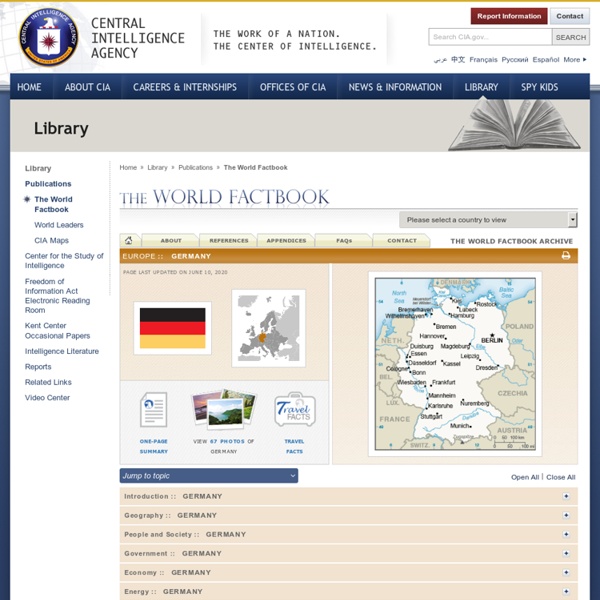



Allemagne République fédérale d’Allemagne (de) Bundesrepublik Deutschland La République fédérale d’Allemagne en Europe (l'Union européenne en vert clair). Beaucoup de peuples germaniques occupent le nord du territoire actuel depuis l'Antiquité classique. Durant ce que l'on nomme les invasions barbares, les tribus germaniques se rapprochent du sud de ce territoire. À partir du Xe siècle, les territoires forment la partie centrale du Saint-Empire romain germanique. Comptant plus de 84 millions d'habitants[2], l'Allemagne est le pays le plus peuplé de l'Union européenne. Étymologie L'Allemagne se dit en allemand : Deutschland /ˈdɔʏtʃlant/ Écouter, en forme longue la République fédérale d'Allemagne[c], abrégée en RFA en allemand : Bundesrepublik Deutschland /ˈbʊn.dəs.ʁe.puˌblik ˈdɔʏtʃ.lant/ Écouter, abrégée en BRD. Le mot gotique Thiuda signifiant « peuple », a comme adjectif Thiudisk. Le français moderne préfère le mot Allemand issu du latin Alamanni désignant le peuple des Alamans[16]. Histoire Îles Lacs
Wiesbaden Military Community | Your home in Germany! RSO Religious Holiday Celebrations Religious Support Operations celebrates religious holidays in the spring of 2015 with a variety of services and gatherings. Click here to see details. Update to driver license policy From USAREUR Public Affairs: The issue concerning the validity of expired U.S. drivers' licenses has been resolved at the diplomatic level. Traffic Advisory: Schiersteiner Bridge Closure The dreaded mega chaos during rush hour on autobahns and roads around Wiesbaden and Mainz came true Wednesday, Feb. 11. Off-post housing survey U.S. “Army in Europe Regulation 190-16: Installation Access Control” requires sponsors to ensure any individuals they sign in are physically escorted at all times. Transformation Update: Movie theater, Clay Kaserne ACP and PX Due to renovation of the Taunus Movie Theater starting Jan. 12, the last movie showing at Taunus will be Jan. 11. Recognize, report suspicious activity New Policy: Remote-Controlled Aircraft New DPW Customer Service number
The Seven Dimensions of Culture - from MindTools.com Many of us work routinely with people from other cultures and backgrounds. Often this goes well, and the cultural differences are interesting and enriching. However, sometimes things go wrong, for reasons that we may not understand. This is where it's important to understand the differences between cultures, so that we can work with people more effectively, and prevent misunderstandings. Trompenaars and Hampden-Turner's Seven Dimensions of Culture help us do this. © iStockphotoMordolff What distinguishes one culture from another? About the Model The Seven Dimensions of Culture were identified by management consultants Fons Trompenaars and Charles Hampden-Turner, and the model was published in their 1997 book, "Riding the Waves of Culture." Trompenaars and Hampden-Turner developed the model after spending 10 years researching the preferences and values of people in dozens of cultures around the world. Universalism versus particularism. We'll look at each dimension in detail below. Note 1: 1. 2.
Germany Germany ( i/ˈdʒɜrməni/; German: Deutschland), officially the Federal Republic of Germany (German: Bundesrepublik Deutschland, pronounced [ˈbʊndəsʁepuˌbliːk ˈdɔʏtʃlant]),[7] is a federal parliamentary republic in western-central Europe. It consists of 16 constituent states, which retain limited sovereignty, and covers an area of 357,021 square kilometres (137,847 sq mi) with a largely temperate seasonal climate. Its capital and largest city is Berlin. Germany is a major economic and political power and traditionally a leader in many cultural, theoretical and technical fields. §Etymology §History §Prehistory §Germanic tribes and Frankish Empire Second- to fifth-century migrations in Europe In the 3rd century a number of large West Germanic tribes emerged: Alemanni, Franks, Chatti, Saxons, Frisii, Sicambri, and Thuringii. §Holy Roman Empire Martin Luther publicised The Ninety-Five Theses in 1517 in Wittenberg, challenging the Roman Catholic Church and initiating the Protestant Reformation.
L’Allemagne (Germany) - Business Culture (FR) L’étiquette en affaires – Attitudes et valeurs Les Allemands sont jugés être maîtres des planifications de beaucoup de points de vue. Le processus de réfléchissement allemand est extrêmement profond, chaque aspect d’un projet étant analysé dans les plus fins détails. L’attitude envers les étrangers Les Allemands non ethniques représentent à l’heure actuelle approximativement dix pour cent de la population allemande, la plupart en étant des descendants des travailleurs venus là-bas dans les années ’60 et ‘70. Qui plus est, un nombre considérable de citoyens allemands, bien que traditionnellement pris comme des Allemands ethniques, sont en fait nés à l’étranger, gardant leur identité culturelle et la langue de leur pays natals, au sus d’être Allemands, ce qui les met en évidence par rapport à ceux nés et élevés en Allemagne. En Allemagne il y a quatre minorités nationales : la minorité danoise, la minorité ethnique friésienne, les Sinti et les Manouches allemands et les Sorbes. Le salaire
La pratique des affaires en Allemagne Dans cette page : Culture des affaires | Les horaires Culture des affaires Les principes fondamentaux de la culture des affaires La culture d'entreprise allemande est marquée par l'organisation, la planification et le perfectionnisme. Une hiérarchie verticale stricte est établie et respectée, et le processus de prise de décision se déroule au sommet de l’entreprise. Les relations personnelles sont rarement nécessaires pour faire des affaires et la vie professionnelle et personnelle est séparée de manière rigide. Le premier contact Être présenté par une tierce partie peut être un atout. La gestion du temps La ponctualité est extrêmement importante et il est judicieux d’arriver à une réunion 15 minutes à l’avance. Les salutations et les titres Lorsque vous rencontrez quelqu'un pour la première fois, donnez-lui une poignée de main courte et ferme et maintenez un contact visuel, mais évitez de regarder pendant de longues périodes inconfortables. La politique de cadeaux Le code vestimentaire